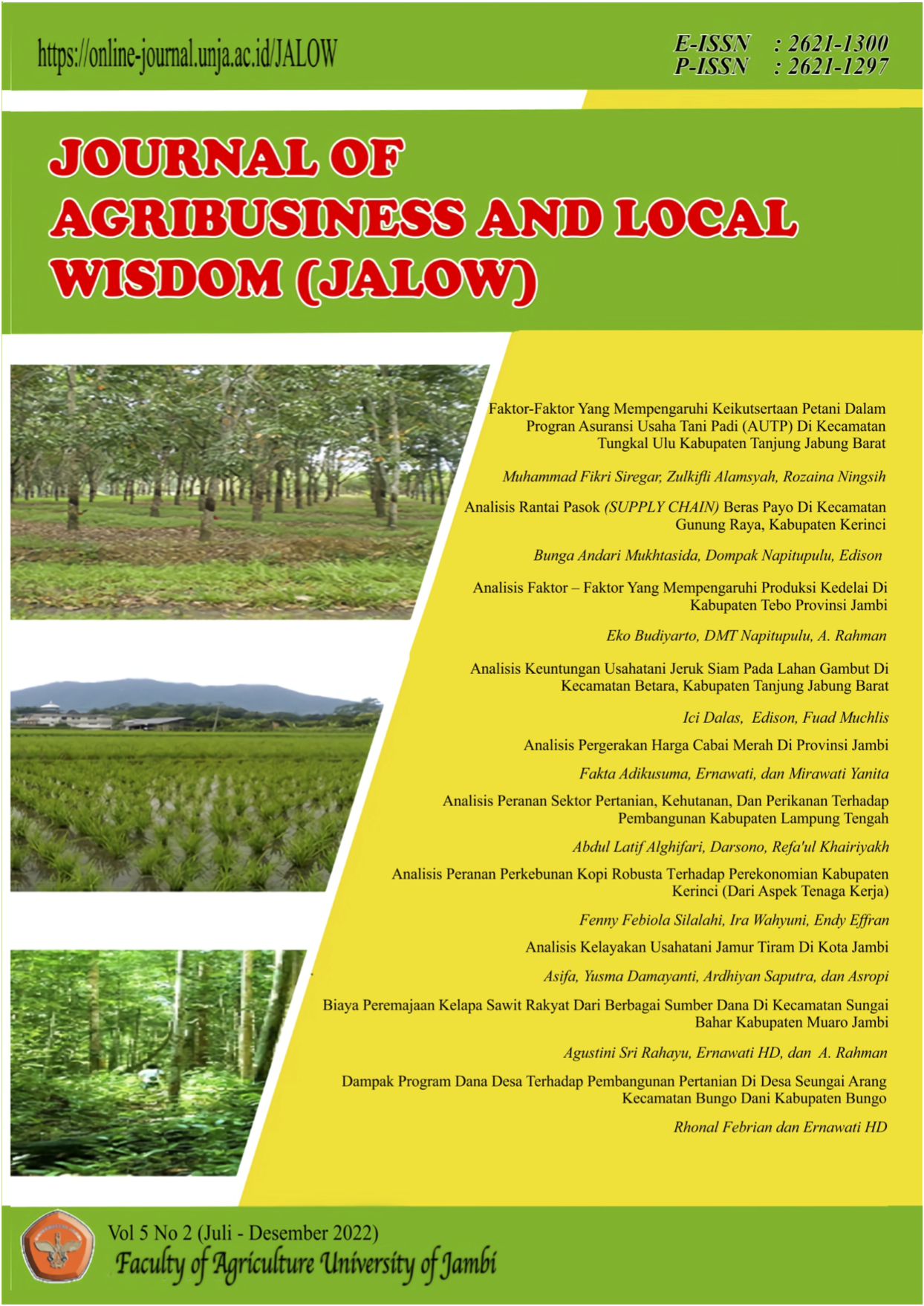Analisis Kelayakan Usahatani Jamur Tiram Di Kota Jambi
DOI:
https://doi.org/10.22437/jalow.v5i2.23109Keywords:
feasibility analysis, oyster mushroom, farmingAbstract
Oyster mushroom is a commodity that has high nutritional content and is used as an alternative food substitute. This commodity farming is relatively new in Jambi City. Oyster mushroom demand is high with a price range of IDR 17,000/kg to IDR 21,000/kg. However, there are still few farmers who do oyster mushroom farming in Jambi City. This study aims to (1) describe the general description of oyster mushroom farming in Jambi City; (2) Analyzing the income of oyster mushroom farming in Jambi City; (3) Analyzing the feasibility of oyster mushroom farming in Jambi City. The research sample was 18 sample farmers consisting of farmers who made F4 media and farmers who purchased F4 media. The data analysis method used is descriptive quantitative, cost, revenue, and income analysis methods, and uses the R/C Ratio, π/C ratio, and BEP feasibility analysis methods. The results showed that (1) Oyster mushroom farming activities in the study area had an average land area of 105.19 m2 with an average production of 1,260 kg and a harvest frequency of 60-90 times in one growing season. (2) The average income of oyster mushroom farming received by farmers who make F4 media is IDR 27.422.889.21/100m2/MT while farmers who buy F4 media have an average income of IDR 25.443.959.20/100m2/MT. (3) Oyster mushroom farming in the research area is feasible because it has an R/C value greater than one, capital productivity is greater than the prevailing bank interest rate, and production, price, and income received by farmers are above the BEP which counted.
Downloads












